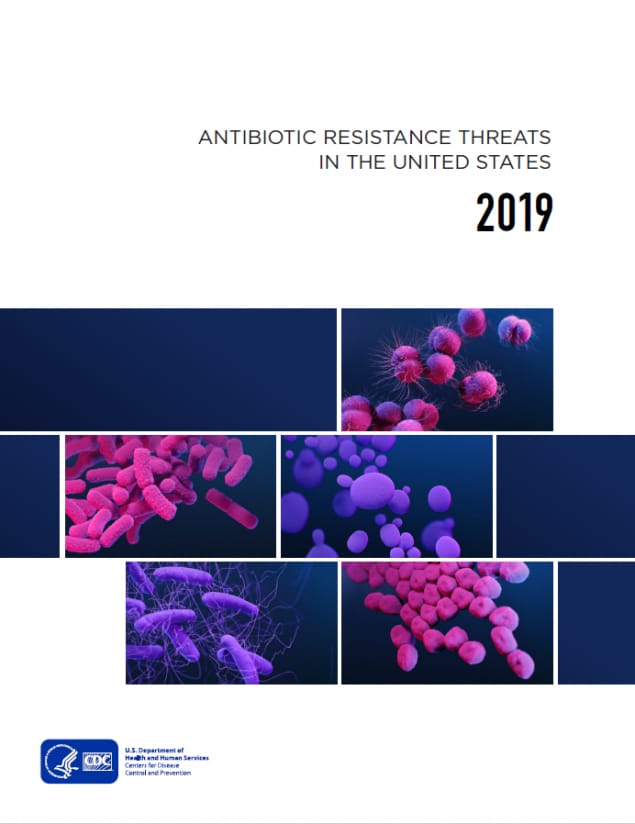Antibiotic Resistance Threats Report and Gastrointestinal Germs
Each year, millions of people in the United States become sick from foodborne and other gastrointestinal infections. Although many of these infections do not require antibiotic treatment, antibiotics can be lifesaving for those with severe illness or certain chronic medical conditions.
Antibiotic resistance can compromise the ability to treat these infections in people and animals and can undermine advances in healthcare and food production. Antibiotic resistance is when bacteria (germs) are able to survive or grow despite the use of an antibiotic that was previously able to stop them.
Antibiotic Resistance Threats in the United States
CDC’s earlier report on antibiotic resistance threats sounded an alarm about the danger of antibiotic resistance.
The follow-up report, Antibiotic Resistant Threats in the United States, 2019 [PDF – 148 pages], provides an updated snapshot of the burden and threats posed by 18 antibiotic-resistant germs. Four of these germs – all of which are listed as serious threats in the report – are bacteria tracked by the National Antimicrobial Resistance Monitoring System:
- Nontyphoidal Salmonella [PDF – 2 pages]
- Campylobacter [PDF – 2 pages]
- Shigella [PDF – 2 pages]
- Salmonella Typhi [PDF – 2 pages]
The 2019 report outlines concerns and highlights actions needed to prevent and respond to antibiotic resistance.
How do bacteria become resistant?
Bacteria can become resistant by altering their DNA (genetic building blocks) to resist the effects of an antibiotic. They also can become resistant after getting a resistance gene from antibiotic-resistant bacteria.
Antibiotic Use in Agriculture
Antibiotic use in food-producing animals can lead to development of antibiotic-resistant bacteria that can harm the public’s health. Animals carry bacteria in their intestines, which can include antibiotic-resistant bacteria. Some bacteria, such as Salmonella, that are carried by animals can make people ill. When animals are given antibiotics, resistant bacteria in their intestines can continue to survive and grow. These resistant bacteria can be spread to people who handle animals, who come into contact with animal environments, or who handle or eat contaminated meat.
Antibiotics are widely used to treat, prevent and control disease in food-producing animals. In 2018, the Food and Drug Administration launched a five-year action plan for supporting responsible use of antibiotics in food-producing animals.
Why is judicious use in food-producing animals important?
Antibiotic use in food-producing animals is linked to the occurrence of antibiotic-resistant infections in humans. For this reason, food-animal producers and veterinarians that care for food animals should use antibiotics responsibly. Responsible use can help to reduce the emergence and spread of resistant bacteria, which helps us continue to be able to use medically important antibiotics to treat sick people.
What can we do?
We can use antibiotics judiciously in people and animals. Any use of antibiotics contributes to the emergence, persistence, and spread of antibiotic-resistant bacteria.
Preventing the spread of antibiotic resistance can be achieved with widespread engagement, especially among leaders in clinical medicine, healthcare leadership, agriculture industry, and public health.
